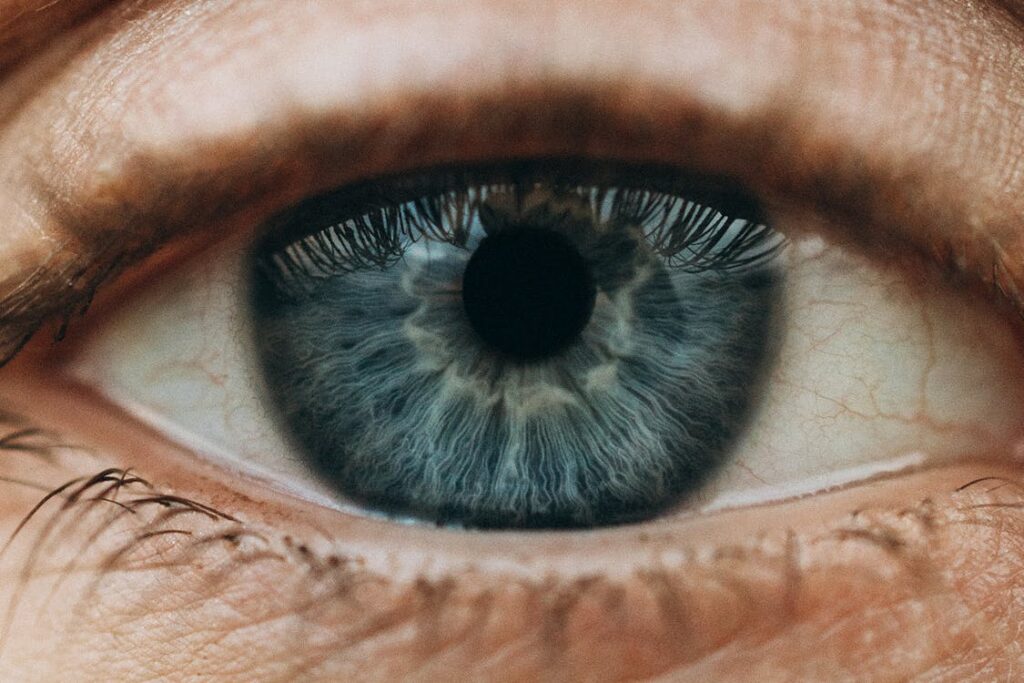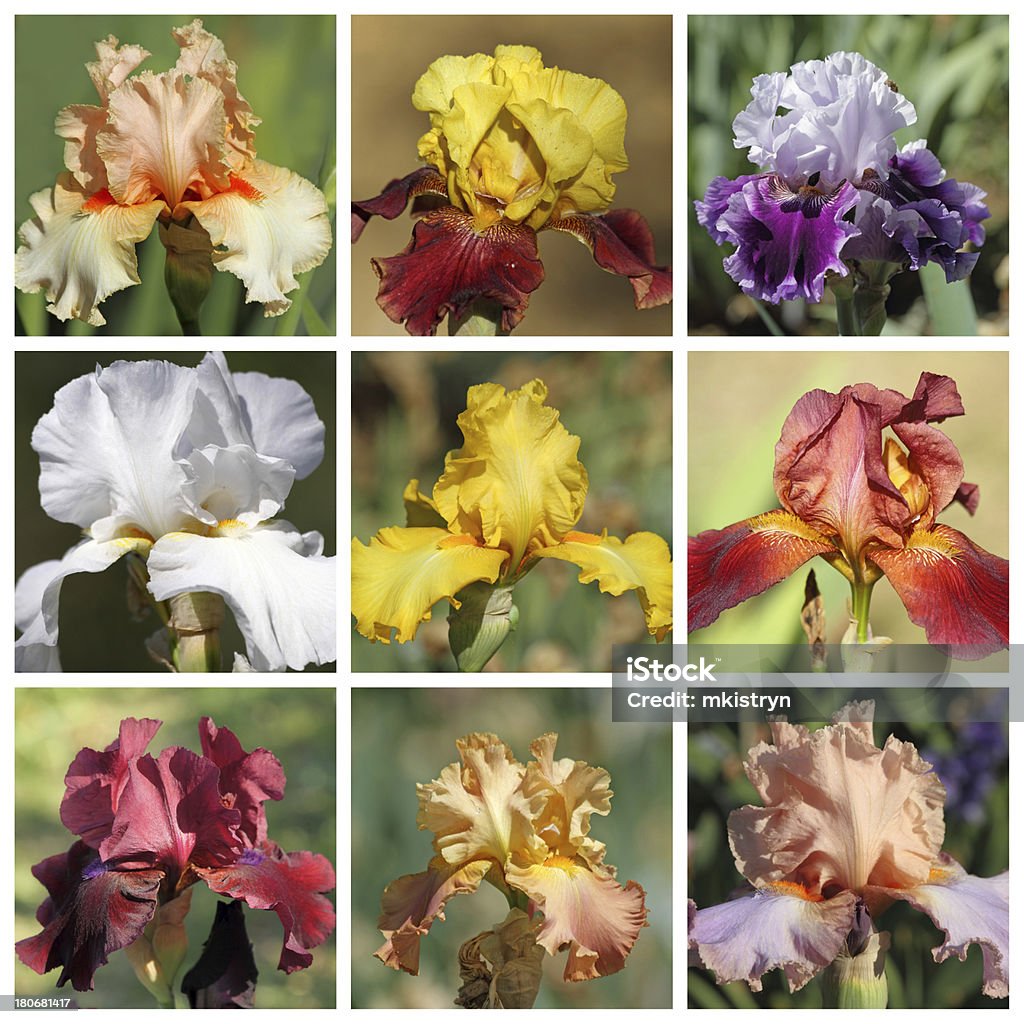Language is a living, breathing entity that evolves over time. Consequently, questions about its intricacies often arise. One such question is, What’s the plural of iris?
This seemingly simple inquiry opens the door to a broader discussion about the meanings of iris, its plural forms, and how to use them in various contexts.
By the end of this article, you will have a clear understanding of this topic and a wealth of examples to draw from.
Read more : Since vs Sense: Understanding When to Use Each Word – Grammar Beacon

Understanding the Word “Iris”
To appreciate the plural forms of iris, it’s essential first to understand what the word means. Iris can refer to two primary concepts:
The Flower: The iris is a genus of flowering plants known for their striking colors and intricate shapes. These flowers belong to the family Iridaceae and are popular in gardens worldwide.
Notably, they bloom in various colors, including purple, blue, yellow, and white.
The Part of the Eye: In anatomy, the iris is the colored part of the eye surrounding the pupil. It plays a crucial role in controlling the amount of light that enters the eye, adjusting its size in response to lighting conditions.
Why Are There Two Plurals: ‘Irises’ and ‘Irides’?
When we discuss the plural forms of iris, we encounter two distinct options: irises and irides. The choice between these forms depends on the context in which the word is used.
Irises: This is the most commonly used plural form when referring to multiple flowers. It is straightforward and follows the standard English pluralization rules, where an “s” is added to the end of the word.
Irides: On the other hand, this plural form is often reserved for discussions about the colored part of the eye, particularly in more scientific or poetic contexts. Furthermore, it may also appear in literature, where the aesthetic quality of language is paramount.
Understanding these distinctions is crucial for clear and effective communication.
Read more : Connector or Connecter: What’s the Correct Spelling? – Grammar Beacon
What is the Plural of Iris?
To summarize succinctly, the plural of iris is “irises.” However, when discussing the anatomical aspect, “irides” can also be appropriate. Here’s a quick recap:
- Iris (singular): Refers to one flower or one part of the eye.
- Irises (plural): Used for multiple flowers.
- Irides (plural): Used for multiple parts of the eye or in literary contexts.
This differentiation is essential when constructing sentences and ensuring that your meaning is clear.
Using ‘Iris’ in Sentences (Singular Usage)
To fully grasp the meanings of iris, let’s explore its usage in sentences. Here are examples for each context:

As a Flower
- The iris blooms beautifully in my garden every spring.
- I received a bouquet that included a stunning blue iris.
- Many gardeners prefer irises for their vibrant colors and resilience.
- Additionally, the delicate petals of the iris attract various pollinators.
As a Part of the Eye
- The doctor examined her iris for any signs of disease.
- Moreover, his striking green iris caught everyone’s attention.
- In fact, the iris controls how much light enters the eye.
- Finally, she has an unusual pattern in her iris that fascinates ophthalmologists.
These sentences demonstrate the versatility of the word iris in both gardening and anatomy.
Read more : “Totalling” vs. “Totaling”: Navigating the Spelling Dilemma – Grammar Beacon
Using ‘Irises’ and ‘Irides’ in Sentences (Plural Usage)
Now, let’s delve into how to use the plural forms irises and irides in sentences.
Usage of “Irises”:
- The garden was filled with irises of every hue, creating a vibrant display.
- During the spring festival, visitors admired the blooming irises along the path.
- Furthermore, gardeners often plant irises for their beauty and ease of care.
- Irises symbolize hope and faith in many cultures, making them a popular choice for weddings.
Usage of “Irides”:
- The irides of her eyes shifted colors with the changing light.
- Additionally, poets often describe the irides as having a mesmerizing quality.
- In scientific studies, researchers examine the irides of various species to understand color variation.
- Ultimately, the artist skillfully captured the irides in his portrait, highlighting their unique patterns.
These examples illustrate how to properly use both plural forms in different contexts.

Possessive Uses of ‘Iris’
Possessive forms provide clarity regarding ownership or association. Let’s explore how to express possessiveness with iris, irises, and irides.
Singular Possessive: Iris’s
The singular possessive form for iris is iris’s. Here are some examples:
- The iris’s petals are delicate and require careful handling.
- She admired the iris’s unique patterns and colors.
Plural Possessive: Irises’
When referring to multiple flowers, the plural possessive form is irises’. Here are examples:
- The irises’ fragrance filled the garden, attracting bees and butterflies.
- During the competition, the judges evaluated the irises’ growth and color.
Plural Possessive: Irides’
For the colored parts of the eye, the plural possessive is irides’. Examples include:
- The irides’ hues vary significantly between individuals, making each one unique.
- She studied the irides’ characteristics to write her thesis on eye color genetics.
These examples clarify how possessive forms can enhance your writing.
The Origins of the Word ‘Iris’
The etymology of iris is as captivating as the word itself. Specifically, the term derives from the Greek word “iris,” meaning “rainbow.” This etymological origin reflects the colorful nature of both the flower and the human eye.
Historical Significance
In ancient mythology, Iris was the goddess of the rainbow, often depicted as a messenger of the gods. This connection to rainbows adds a layer of depth to the word and reflects its beauty and versatility.
Notably, it emphasizes the association between the iris flower and the vibrant colors of the eye, showcasing the natural world’s wonder.

Cultural Significance of Irises
Irises hold a special place in various cultures and traditions. Their beauty and symbolism enrich our understanding of these flowers beyond their botanical definition.
Symbolism
Faith and Wisdom: In many cultures, irises symbolize faith, hope, and wisdom. They are often associated with deep feelings and meaningful events, making them popular in ceremonies.
National Symbols: In France, the iris is known as fleur-de-lis, symbolizing purity and light. This emblem is often used in heraldry and represents French royalty.
Artistic Representation
Artists have long drawn inspiration from irises. For instance, Vincent van Gogh’s famous paintings feature these flowers prominently, showcasing their vibrant colors and delicate forms.
Literature and Poetry
Irises frequently appear in literature and poetry, often symbolizing beauty, mystery, and the passage of time. In this way, poets utilize the unique qualities of irises to evoke emotions and create vivid imagery in their works.

The Science of Irises and Irides
Understanding the biological aspects of irises and irides can enhance our appreciation of these terms. Let’s look at their scientific relevance.
Botany of Irises
The iris is a resilient flower that can thrive in various environments. For example, it grows from rhizomes, allowing it to spread easily in gardens.
Growth Conditions: Irises prefer well-drained soil and can adapt to both sunny and partially shaded areas.
Varieties: There are numerous species of irises, including bearded, Siberian, and Japanese irises, each with unique characteristics and care requirements.
Anatomy of the Iris
In human anatomy, the iris is a vital component of the eye, consisting of muscle fibers and connective tissue.
Functionality: The iris controls the size of the pupil through a set of muscles called the sphincter and dilator muscles, which respond to light levels.
Color Variation: The color of the iris is determined by the amount and type of pigments present, as well as the structural properties of the tissue.
Medical Importance
Understanding the iris’s structure and function is crucial for medical professionals. In fact, irises can reveal various health issues, including genetic disorders and other medical conditions.
Creative Uses of Irises in Design and Decor
Irises aren’t just beautiful in nature; they also inspire various creative endeavors. Here’s how they influence design and decor.
Floral Arrangements
Irises make stunning additions to floral arrangements. Their striking colors and shapes can elevate any bouquet, making them a popular choice for weddings and special events.
Interior Design
Moreover, incorporating iris motifs into home decor can create a vibrant atmosphere. From wall art to fabric patterns, the beauty of irises can enhance living spaces.
Fashion
The colors and shapes of irises inspire fashion designers, leading to stunning patterns in clothing and accessories. As a result, their aesthetic appeal translates beautifully into wearable art.
Conclusion
In addressing the question, what’s the plural of iris, we’ve navigated a rich landscape of meanings, uses, and cultural significance. Irises and irides serve distinct purposes, and understanding their contexts is vital for effective communication.
By exploring the etymology, possessive forms, and cultural relevance, we’ve uncovered the layers that make this word so intriguing. Whether you’re discussing gardening, anatomy, or art, knowing how to use these terms appropriately will enhance your communication skills.
Next time someone asks, “What is the plural of iris?” you can confidently share your knowledge, enriched by a deeper understanding of this beautiful word and its multifaceted meanings.

Sources
Here’s a summary table of the article “What’s the Plural of Iris?” outlining the key points covered:
| Topic | Details |
| Definition of Iris | Refers to a flowering plant (genus Iridaceae) and the colored part of the eye. |
| Plural Forms | – Irises: Plural for the flower. – Irides: Plural for the part of the eye. |
| Singular Usage | – The iris blooms beautifully in my garden. – Her iris is a deep shade of green. |
| Plural Usage (Irises) | – The garden was filled with irises of every hue. – During the festival, visitors admired the blooming irises. |
| Plural Usage (Irides) | – The irides of her eyes shifted colors. – Researchers study the irides’ characteristics. |
| Possessive Forms | – Iris’s: The iris’s petals are delicate. – Irises’: The irises’ fragrance filled the garden. – Irides’: The irides’ hues vary significantly. |
| Etymology | Derived from the Greek word “iris,” meaning “rainbow.” |
| Cultural Significance | – Symbolizes faith, hope, and wisdom. – Associated with French national symbolism (fleur-de-lis). |
| Artistic Representation | Featured in the works of artists like Vincent van Gogh and in poetry as a symbol of beauty and mystery. |
| Scientific Relevance | – Botany: Irises thrive in various environments; numerous species exist. – Anatomy: Iris controls light entry and varies in color. |
| Creative Uses | – Floral arrangements, interior design, and fashion inspired by irises enhance beauty and aesthetics. |
This table provides a concise overview of the article’s content and main points. If you need any further details or adjustments, feel free to ask!

James Logan is a seasoned blogger and language enthusiast behind Grammar Beacon. With years of experience in grammar and writing, James shares his expertise through insightful and engaging content. His passion for clear communication and linguistic precision shines in every post, making complex grammar concepts accessible and enjoyable for readers. Follow James for expert advice and tips to refine your writing skills.






